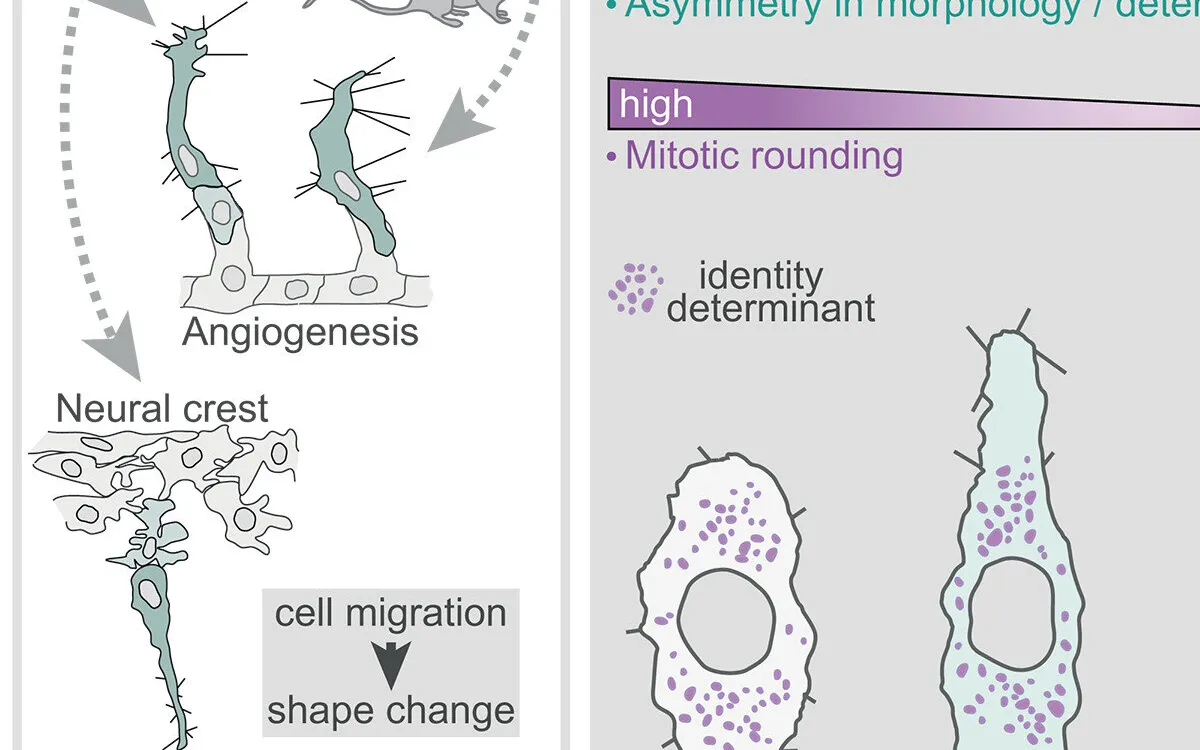
Scientists from The University of Manchester have made groundbreaking discoveries that challenge the traditional understanding of how cells in living organisms divide. Published in the prestigious journal Science, this study could potentially change what is taught in schools about cell division—a concept that has remained largely unchanged for over a century.
For generations, students have learned that during cell division, a parent cell becomes spherical before splitting into two daughter cells of equal size and shape. However, the recent findings indicate that cell rounding is not a universal characteristic in cell division, and this is not how cells generally operate within living organisms.
The study reveals that dividing cells often do not adopt a round shape before division. This absence of rounding leads to what is known as asymmetric division, resulting in two daughter cells that differ in both size and function. Asymmetric division plays a crucial role in generating various cell types necessary for different tissues and organs within the body.
Historically, asymmetric cell division has been primarily linked to specialized cells called stem cells. However, the research team found that the parent cell's shape before division significantly influences whether it will round up and how symmetric its daughter cells will be. Shorter, wider cells tend to round up and produce similar daughter cells, while longer, thinner cells typically undergo asymmetric division, leading to distinct daughter cells.
The implications of these findings are profound, particularly regarding our understanding of diseases such as cancer. The study suggests that non-round, asymmetric division could lead to varied cell behaviors that promote cancer progression through metastasis. Moreover, these insights may greatly impact the field of regenerative medicine, allowing scientists to better manufacture specific cell types needed for tissue and organ regeneration.
In the future, researchers may be able to influence the functionality of daughter cells merely by manipulating the shape of the parent cell, opening new avenues for medical advancements.
Co-lead author Dr. Shane Herbert, a senior research fellow at The University of Manchester, emphasized the significance of their findings. He noted, “The phenomenon of mitosis—or cell division—is fundamental to life and a basic biological concept taught from a young age. Our research indicates that the shape of a cell before it divides can fundamentally influence whether it rounds and, crucially, whether its daughters are symmetric or asymmetric in size and function.”
The research team utilized real-time imaging to observe the formation of blood vessels in 1-day-old transparent zebrafish embryos. They discovered that as blood vessels and tissues grow, the leading cell, known as the tip cell, does not round up as expected during division. This unique behavior allows it to divide asymmetrically, creating a new fast-moving tip cell and a slower following cell.
Additionally, the scientists employed a technique called micropatterning, which enables them to create specifically shaped microscopic patches of proteins for cells to adhere to. Co-first author Dr. Georgia Hulmes explained, “Micropatterning allows us to manipulate the shape of cells and examine how these shapes impact subsequent cell division.” This technique, known as PRIMO by Alvéole, utilizes a UV laser to create precise patterns on a non-sticky surface where cells can anchor themselves.
By controlling the shape of the cells at a microscopic level, the team is able to explore how different cell shapes influence the division process, providing valuable insights into the mechanics of cell division and its implications for health and disease.
This pioneering research from The University of Manchester not only challenges long-held beliefs about cell division but also opens up new pathways for understanding complex biological processes and their implications for medicine. As our knowledge of asymmetric division expands, so too does our potential to harness this understanding for therapeutic applications, promising exciting developments in both cancer research and regenerative medicine.